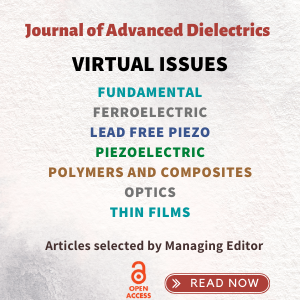System Upgrade on Tue, May 28th, 2024 at 2am (EDT)
Existing users will be able to log into the site and access content. However, E-commerce and registration of new users may not be available for up to 12 hours.For online purchase, please visit us again. Contact us at customercare@wspc.com for any enquiries.
First-generation ethanol plants did not have many operational challenges as the feedstocks (e.g., corn) used for fuel production are dense, stable, storable, and shippable commodity-type products with fewer conversion challenges. These feedstock properties led the first-generation large-scale biorefineries to grow exponentially. In the second-generation biofuels, the feedstocks used are agricultural and forest residues, dedicated energy crops, industrial wastes, and municipal solid waste. When the industry tested these feedstocks for biofuel production, they faced flowability, storage, transportation, and conversion issues. One way to overcome some of the feeding, handling, transportation, and variable moisture challenges is to densify the biomass. Pellet mills and briquette presses are commonly used to produce densified products. The densified products have uniform size, shape, higher bulk density, and better downstream conversion performance. Also, the densified products are aerobically stable and can be stored for longer durations without any loss in quality.
This book's focus is on understanding how the densification process variables, biomass types and their blends, mechanical preprocessing, and thermal and chemical pretreatment methods impact the quality of the densified products produced for biofuel production. Finally, the book also explores the conversion performance of densified biomass for biofuel production.
Sample Chapter(s)
Preface
Chapter 1: An Overview of Preprocessing and Pretreatment Technologies for Biomass
Contents:
- An Overview of Preprocessing and Pretreatments Technologies for Biomass (Jaya Shankar Tumuluru)
- Densification Process Modeling and Commonly Used Systems (Jaya Shankar Tumuluru)
- Densification Characteristics of Raw and Pretreated Herbaceous Biomasses and Their Blends (Stefan Frodeson)
- Blending and Densification: Significance and Quality (Stefan Frodeson and Jaya Shankar Tumuluru)
- The Role of Bulk Solids Flow Behavior in Biomass Densification (Jayant Khambekar, Carrie E Hartford, and John W Carson)
- Thermal Pretreatment Impact on Densified Biomass Physical Properties (Bahman Ghiasi, Jaya Shankar Tumuluru, and Shahab Sokhansanj)
- Impact of Densified Biomass Feedstocks on Biofuel Production from Biomass Gasification (Joseph D Smith)
- Densification of Agricultural Residue for Hydrothermal Liquefaction (Bharathkiran Maddipudi, Anuradha R Shende, Vinod Amar, Khang Huynh, Jaya Shankar Tumuluru, and Rajesh V Shende)
- Densification of Microwave-Torrefied Oat Hull for Use As a Solid Fuel (Esteban Valdez, Lope G Tabil, Edmund Mupondwa, Tim Dumonceaux, Duncan Cree, and Hadi Moazed)
- Densification Characteristics of Ammonia Fiber Explosion Pretreated Biomass and Applications (Venkatesh Balan, Bryan Ubanwa, and Bruce Dale)
- A Comprehensive Evaluation of the Various Routes of Biochemical Conversion of Pelletized Biomass (Anindita Paul, Ankita Juneja, Jaya Shankar Tumuluru, and Deepak Kumar)
Readership: Undergraduate and graduate students, university professors, national laboratory researchers, independent researchers, industry, biorefinery managers, biomass process engineers, policy makers.






